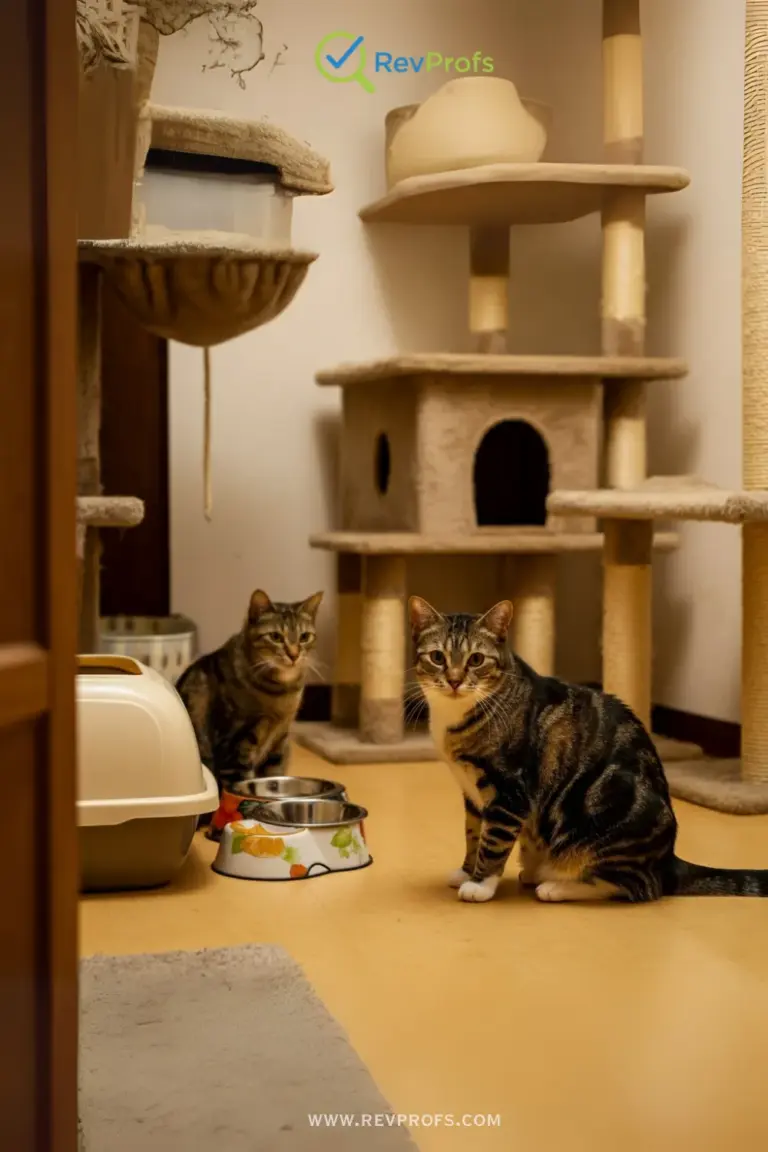How to Correct a Cat’s Behavior: 7 Essential Tips
Sharing your home with a cat can be one of life’s greatest joys. They provide companionship, endless amusement, and comforting purrs. But sometimes, their natural instincts can lead to behaviors that are less than ideal. If you’re struggling with a feline friend who has developed some frustrating habits, you’re not alone. Many pet parents find themselves wondering how to correct a cat’s behavior in a way that is both effective and kind. The great news is that with a little patience, understanding, and the right techniques, you can guide your cat toward better habits and strengthen your bond in the process.
It’s easy to feel frustrated when faced with ongoing cat behavior problems, but it’s important to remember that your cat isn’t acting out to spite you. Most unwanted behaviors are rooted in instinct, anxiety, boredom, or a medical issue. By approaching the situation with empathy, you can get to the root of the problem and find a solution that works for both of you. This guide will provide supportive and practical cat training tips to help you navigate common challenges and build a more harmonious home with your beloved cat.
Understanding the “Why” Behind Your Cat’s Behavior
Before you can correct a behavior, you have to understand its cause. Cats communicate through their actions, and unwanted behaviors are often just their way of telling you something is wrong. Yelling at your cat or using punishment is rarely effective and can often make the problem worse by creating fear and anxiety, which can damage your relationship.
Instead, let’s play detective. Think about what might be motivating the behavior.
- Is it environmental? Has there been a recent change in the home, like a new pet, a new baby, or a move?
- Is it boredom? Does your cat have enough toys, scratching posts, and playtime to stay mentally and physically stimulated?
- Is it medical? Could a health issue be the underlying cause? This is especially common with litter box issues.
A cat who suddenly stops using their litter box might have a urinary tract infection. A cat that becomes aggressive might be in pain. Your first step in addressing any sudden and significant behavior change should always be a trip to the veterinarian to rule out any medical problems. Once health concerns are cleared, you can focus on behavioral solutions.
How to Correct a Cat’s Behavior
Correcting your cat’s behavior isn’t about discipline; it’s about redirection, management, and positive reinforcement. The goal is to make the “right” behavior easy and rewarding for your cat, while making the “wrong” behavior difficult or unappealing. This approach builds trust and teaches your cat what you want them to do, rather than just what you don’t.
Let’s dive into some of the most effective, vet-approved strategies to manage and correct common behavioral challenges.
1. Master Positive Reinforcement Cat Training
The most powerful tool in your training toolkit is positive reinforcement cat training. This method focuses on rewarding the behaviors you want to see, which makes your cat more likely to repeat them. Punishment-based methods create fear and don’t teach your cat what the correct behavior is.
How it works:
- Reward good behavior immediately: When you see your cat using their scratching post instead of the sofa, or playing gently, reward them instantly with a treat, a favorite toy, or praise in a happy tone.
- Use high-value treats: Find a treat your cat absolutely loves and reserve it just for training. This makes the reward more special and motivating.
- Keep sessions short and fun: Cats have short attention spans. Keep training sessions to just a few minutes at a time to hold their interest and end on a positive note.
Positive reinforcement is a wonderful way to build a stronger bond. It turns training into a fun game that you and your cat can enjoy together.
2. Solve Litter Box Issues with a Strategy
Few things are more frustrating than a cat avoiding their litter box. But before you get upset, put on your detective hat. Litter box issues are one of the clearest ways a cat signals that something is amiss.

Common causes and solutions:
- Medical Problems: A urinary tract infection, bladder stones, or kidney disease can make urination painful. Your cat may associate this pain with the litter box and start avoiding it. A vet visit is essential.
- Cleanliness: Cats are meticulously clean. A dirty litter box is a huge turn-off. Scoop the box at least once a day and completely change the litter and wash the box weekly.
- Location, Location, Location: The box should be in a quiet, low-traffic area where your cat feels safe. Avoid placing it near loud appliances or their food and water bowls.
- The Right Box and Litter: The general rule is one litter box per cat, plus one extra. Make sure the box is large enough for your cat to turn around in comfortably. Some cats are picky about litter type—if you recently switched brands, that could be the culprit. Try offering a few different types of litter in different boxes to see which one your cat prefers.
3. Redirect Unwanted Scratching
Cat scratching furniture is a natural and necessary behavior. Cats scratch to stretch their muscles, mark their territory, and maintain their claws. You’ll never stop a cat from scratching, but you can redirect it to an appropriate spot.
Steps for success:
- Provide great alternatives: Invest in several sturdy scratching posts of different materials (sisal rope, cardboard, carpet) and types (vertical, horizontal). Place them near the areas your cat currently scratches and in their favorite hangout spots.
- Make the old spot unappealing: Make the furniture less attractive for scratching. You can use double-sided sticky tape, sandpaper, or aluminum foil on the areas your cat targets. You can also use a citrus-scented spray, as cats generally dislike the smell.
- Make the new spot irresistible: Encourage your cat to use the post by sprinkling it with catnip or using a wand toy to entice them to play on and around it. Praise and reward them lavishly whenever you see them using the post.
4. Manage and Reduce Cat Aggression
Cat aggression can be scary and complex. It can be directed at people, other cats, or other animals. The key is to identify the type of aggression and its trigger.
Common types of aggression:
- Play Aggression: Often seen in young, energetic cats who weren’t taught boundaries. They may bite or scratch during play. Redirect this by using wand toys or laser pointers to keep a distance between your hands and their teeth. Never use your hands as toys. If they bite, say “ouch” loudly and end the play session immediately.
- Fear Aggression: A scared cat may hiss, swat, or bite to create distance. The key is to identify the source of the fear and work to build their confidence through positive experiences. Don’t force interactions.
- Territorial Aggression: This can happen when a new cat enters the home. Introductions should be done very slowly, over weeks, using scent swapping and separate living spaces before a face-to-face meeting.
- Redirected Aggression: If a cat sees something outside that triggers them (like another cat), they might lash out at the nearest person or pet. If this happens, give them space to calm down.
Never physically punish an aggressive cat, as this will only increase their fear and escalate the aggression.
5. Enrich Their Environment to Prevent Boredom
A bored cat is a mischievous cat. Many behavior problems, like excessive vocalization, destructive behavior, and even some forms of aggression, stem from a lack of mental and physical stimulation.
Easy enrichment ideas:
- Interactive Play: Schedule at least two 15-minute play sessions a day using toys that mimic hunting, like feather wands.
- Puzzle Feeders: Make your cat “work” for their food. Puzzle feeders engage their minds and satisfy their foraging instincts.
- Vertical Space: Cats love to climb and observe from above. Cat trees, shelves, and window perches give them a sense of security and a great view.
- Bird Feeders: Placing a bird feeder outside a window can provide hours of “cat TV.”
6. Ignore Attention-Seeking Behavior
Does your cat meow non-stop at 5 a.m. for breakfast? Do they knock things off your desk while you’re trying to work? This is often attention-seeking behavior. As hard as it is, the best response is to ignore it. If you give in—by feeding them or giving them a pat—you are rewarding the behavior and teaching them that it works.
Wait for a moment of quiet, then reward them with attention or a treat. This teaches them that polite behavior, not pestering, gets them what they want. It takes consistency, but it works.
7. Know When to Seek a Feline Behavior Consultation
Sometimes, despite your best efforts, a behavior problem may be too complex to solve on your own. If you’re feeling overwhelmed, or if the behavior involves serious aggression, it might be time for a feline behavior consultation.
A certified cat behavior consultant or a veterinary behaviorist is a trained expert who can help you identify the root cause of the issue and create a detailed, customized plan to address it. They can provide invaluable support and guidance, giving you the tools and confidence you need to help your cat. Your regular veterinarian can often provide a referral.
Ultimately, building a loving and respectful relationship with your cat is a journey. There will be bumps along the road, but approaching challenges with patience and a desire to understand will make all the difference. You’re their trusted caregiver, and by providing a safe, enriching, and loving environment, you can guide them toward being the happy, well-behaved companion you both want.
Ready for the Next Step?
Your pet's journey doesn't end here. Explore our expert guides to ensure they get the best care at every stage.
Puppy & Dog Care
From choosing the right food to understanding their behavior, our dog care guides cover everything you need to know.
Explore Dog GuidesGear & Product Reviews
Find honest, in-depth reviews on the latest pet gear, from smart collars to durable toys, and make informed decisions.
See All Reviews



